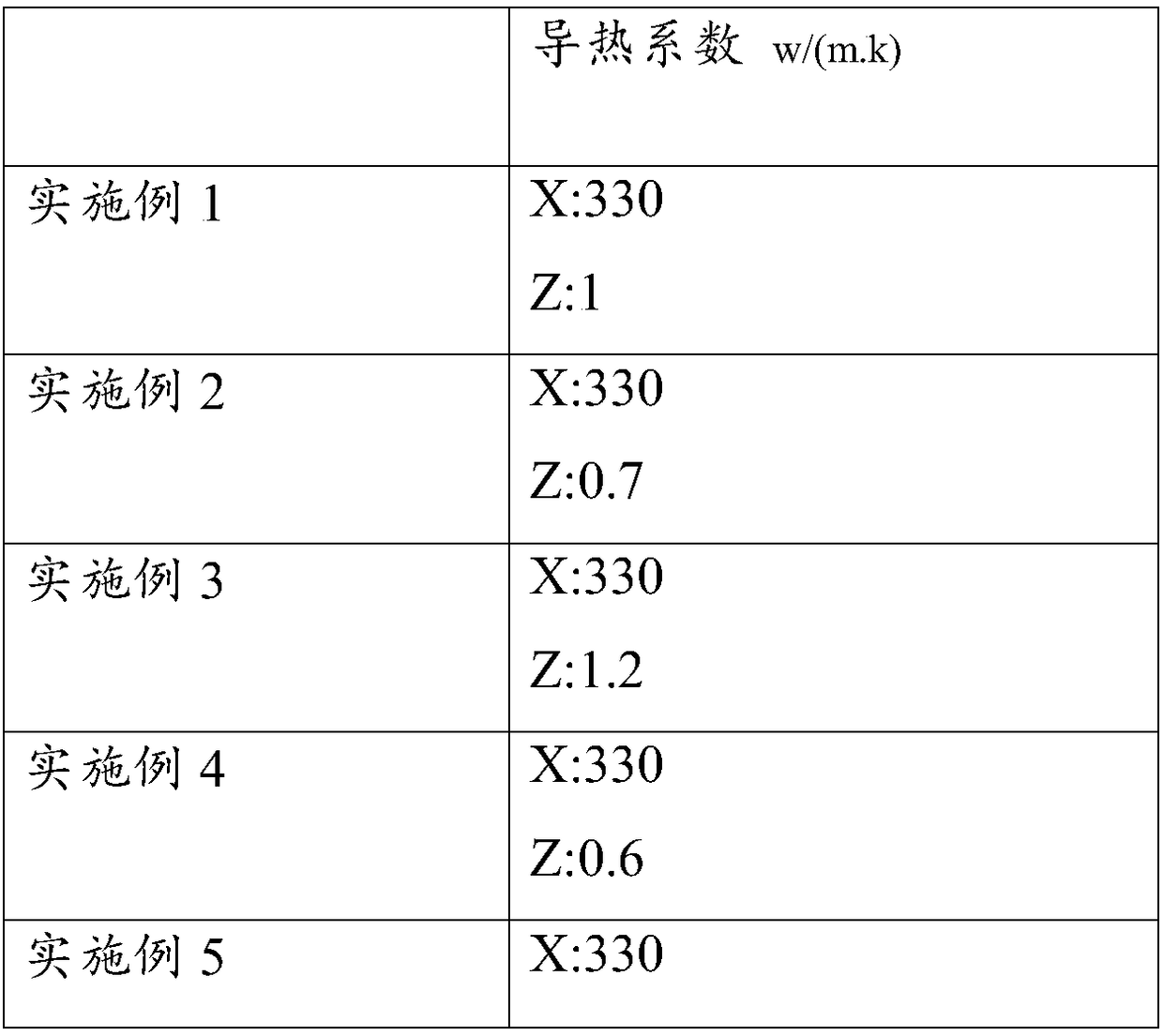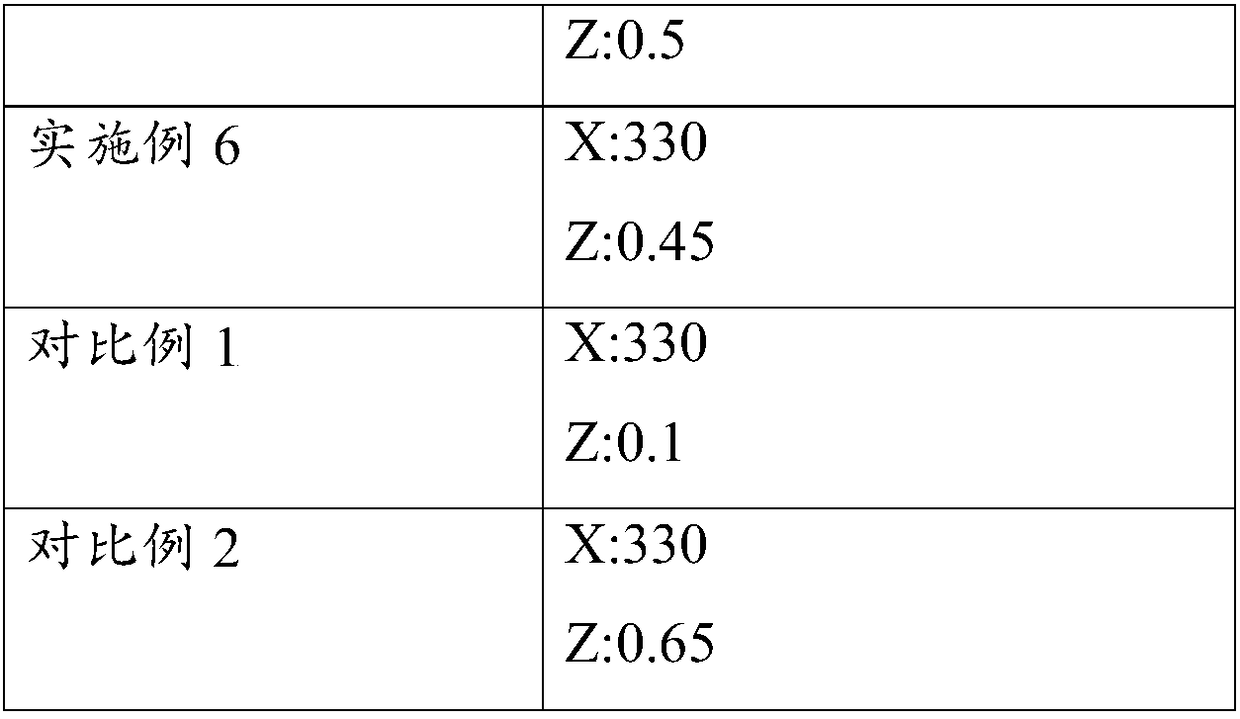Heat-conducting adhesive tape
A tape and adhesive layer technology, applied in the direction of adhesives, film/sheet adhesives, etc., can solve the problems of poor heat dissipation of thermally conductive tapes, and achieve the effects of avoiding poor reworkability, improving overall performance, and improving impedance performance
- Summary
- Abstract
- Description
- Claims
- Application Information
AI Technical Summary
Problems solved by technology
Method used
Image
Examples
Embodiment 1
[0076] A thermally conductive tape:
[0077] To prepare the foam:
[0078] Vacuum dehydration of polyether polyol at 130-140 ℃, moisture content is less than 0.3%, polyether polyol (molecular weight: 1000, hydroxyl value: 110) 100 parts, MDI 35 parts, water (foaming agent): 1.5 parts, stannous octoate (catalyst): 0.5 part, silicone oil: 2 parts, carbon nanotubes 5 parts, reaction temperature 80-82 ℃, reaction 10min, and then directly poured on copper foil, copper foil is rolled copper with a thickness of 9μm foil.
[0079] On the other side of the copper foil, a slot die was used to coat the PSA with a coating thickness of 10 μm, and then a release film was attached and wound.
[0080] The final structure is as figure 1 As shown, it includes a release film 1, a PSA layer 2, a copper foil 3, and a foam layer 4 in sequence.
Embodiment 2
[0082] The main difference from Example 1 is that the composition of the foam is different, as follows.
[0083] To prepare the foam:
[0084] Vacuum dehydration of polyether polyol at 130-140°C, moisture content is less than 0.3%, polyether polyol (molecular weight: 1000, hydroxyl value: 110) 100 parts, MDI 30 parts, water (foaming agent): 2 parts, stannous octoate (catalyst): 0.3 parts, silicone oil: 2.5 parts, 4 parts of carbon nanotubes, 6 parts of 2,3-dibromopropanol, the reaction temperature is 88-90 ℃, the reaction is 5min, and then directly poured onto the copper foil Above, the copper foil is a rolled copper foil with a thickness of 9 μm.
[0085] On the other side of the copper foil, a slot die was used to coat the PSA with a coating thickness of 10 μm, and then a release film was attached and wound.
Embodiment 3
[0087] The main difference from Example 1 is that the composition of the foam is different, as follows.
[0088] To prepare the foam:
[0089] Vacuum dehydration of polyether polyol at 130-140 ° C, moisture content is less than 0.3%, polyether polyol (molecular weight: 1000, hydroxyl value: 110) 100 parts, MDI 40 parts, water (foaming agent): 1 part, stannous octoate (catalyst): 0.8 part, silicone oil: 1.5 part, 6 parts of carbon nanotubes, 4 parts of 2,3-dibromopropanol, reaction temperature 88-90 ℃, reaction 5min, and then directly poured into copper On the foil, the copper foil is a rolled copper foil with a thickness of 9 μm.
[0090] On the other side of the copper foil, a slot die was used to coat the PSA with a coating thickness of 10 μm, and then a release film was attached and wound.
PUM
| Property | Measurement | Unit |
|---|---|---|
| impedance | aaaaa | aaaaa |
| thickness | aaaaa | aaaaa |
| thickness | aaaaa | aaaaa |
Abstract
Description
Claims
Application Information
 Login to View More
Login to View More - R&D
- Intellectual Property
- Life Sciences
- Materials
- Tech Scout
- Unparalleled Data Quality
- Higher Quality Content
- 60% Fewer Hallucinations
Browse by: Latest US Patents, China's latest patents, Technical Efficacy Thesaurus, Application Domain, Technology Topic, Popular Technical Reports.
© 2025 PatSnap. All rights reserved.Legal|Privacy policy|Modern Slavery Act Transparency Statement|Sitemap|About US| Contact US: help@patsnap.com



